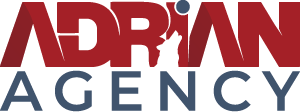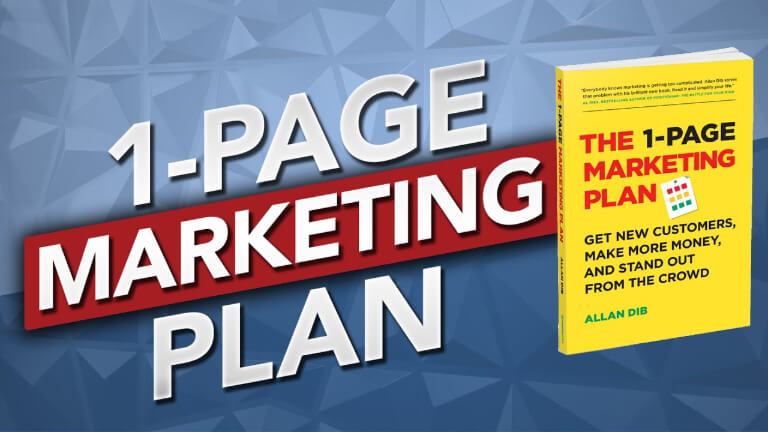
Graphic designers are in a unique position. You have to be creative, you have to be strategic, and you have to understand the fundamentals of marketing. There is no way around it. However, not many graphic designers know how to create a 1-page marketing plan that will help them achieve their goals with clarity and focus. It’s time for this to change! With Amazon affiliate links to make it easier to buy for yourself, I wanted to share the wisdom I’ve gained from a fantastic resource: The 1-Page Marketing Plan by Alan Dibb.
Why Talk about The 1-Page Marketing Plan?

Understanding the 1-Page Marketing Plan Framework
So, in documenting your marketing, you need to understand that you have to have a framework. The frameworks that I’ve learned that I’ve paid that I’ve studied from books and coaches and mentors have really paved the way for me and allowed me to get to where I am today. So, I’m going to share a lot of these things with you on our YouTube channel; that’s what I’ve been happy and successful at—just sharing the stuff that I’m learning along my journey. So, I’m going to continue that by sharing my 1-page marketing plan. Now, the one page marketing plan is a simplified version of what I do for consulting but as a component of my marketing strategy for my clients that have given me a lot of success that have been able to provide a framework that is simple that my clients can understand and that I’m able to sell so once you put something in writing it gives you a 300% increase in chances of having success.
Buy the Book: The 1-Page Marketing Plan by Alan Dibb

Why the 1-Page Marketing Plan Works
So the next thing that’s really important for you to understand before we jump into the marketing plan, is that you have to have a simple plan. That’s what I like about the one-page marketing plan, it’s very simple. And when I explain this to you, you’re going to see exactly what I’m talking about, as you don’t have to over complicate your business. You simplify things, and this cuts down on your learning curve. You cut down on your learning curve by keeping things simple, like focusing on one niche, one offer, and one audience.
Cutting out the learning curve allows you to go a lot faster, and that’s obviously what you want. You want to succeed quickly—you want to have a lot of success—and you want to do so as soon as possible. I took the long road—15 years—to get here, but I’ve now developed processes, systems, and an understanding that will enable me to reach a seven-figure agency level. So this marketing plan is going on for sure to be lots of fun; we’ll go through each part section by section. If you buy the book or watch the video above, you can see they’re in different colors.
The Before Phase
The sales process consists of a number of different phases. The first phase is the prospecting period, during which you contact individuals who are not yet clients and try to get them interested in what you have to offer. This portion is referred to as the “before” stage because it’s when you first learn who they are. It’s also known as the prospecting phase since it’s when you first contact individuals who aren’t yet clients and attempt to pique their interest in what you have to sell. This is the initial step of sales, and it’s extremely crucial.
Who Is Your Ideal Client?
What’s the first thing that comes to your mind when you think of marketing? The most important component of your marketing is to figure out who your prospect is. Who are they? Who do you want to help solve their problems? This whole idea should originate from there: what problem are you going to solve for someone? It should be about solving people’s issues. Why does your business exist if it’s not intended to fix problems? Understanding who your target consumer or audience is will allow you to identify what your target problem is that you can assist with.
What’s Your Message?
Once you’ve figured out what the problem is, you can figure out how to address it. Once you’ve discovered what the solution is, you’ll be able to understand what message you are going to use to communicate with your audience and let them know you can help. Are they frustrated? Are they underpaid? Are they losing their jobs to overseas workers? Once you identify the problem that needs solving, and how to solve it, how will you communicate that you have a solution to those issues? It’s crucial for any successful marketing technique to comprehend and empathize with your target audience so you can effectively get your message across and show them you are the best solution to their pain points.
What Media Will You Use?
The last component of this phase is the media you’ll use. So are you going to utilize blog articles? What about a classified ad site like Craigslist? Have you considered LinkedIn, Facebook groups, and other types of social media? What type of media will you utilize to reach this audience? It may seem like a matter of preference, but this should be a carefully calculated choice in your marketing strategy.
There are already conversations among your audience happening online that you must join. They could be in a forum or a private community somewhere online. I can’t tell you where they are. That’s research that you’ll have to do on your own based on who you want to reach, but it’s critical that you understand the kind of media they consume and where your target market hangs out and communicates. This is one of the most important phases in your content marketing strategy. Maybe it’s on Facebook, Instagram, or TikTok, but this is a crucial stage that many people overlook and I want to ensure that you guys know about it.
The During Phase
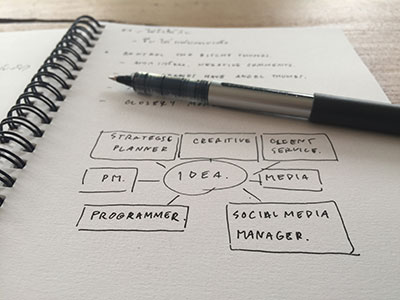
Creating a Lead Capture System
There also, in order to do that, you’ll need a lead capture system. So that could be a funnel or it might be a landing page from an ad campaign. It could be a YouTube video or an article like this. This is part of my funnel; this is part of my lead capture system where I’m providing valuable information in exchange for people joining the Instagram Pro Network and doing other things. And really giving insight into our lives, drawing comparisons and parallels between our experiences and our prospects’ needs, that’s a lead collection method.
Nurturing Your Leads
So now I’m going to talk about lead nurturing. My email marketing is a CRM, and that is how I nurture my leads. Should you use a CRM system and email marketing? Would it be better to have a Facebook group where you discuss topics under your expertise on a regular basis to build those connections? Are there consistent YouTube videos or other types of content that you’re putting out? These are all questions you should ask yourself.
Converting Your Leads
So, for me in the previous example, let’s say it was a lead generation strategy that went from one phase to the next. So there was my sales conversion approach that I’m going to bring people into a free group or a free dinner right now to nurture that lead. Then comes leading them to the next stage, where I’ve got an offer or opportunity for them. This is a really essential aspect that many individuals miss when they’re in business. They never really make the ask; they don’t have a good conversion strategy, and they don’t close as many deals because of it. You have to make the ask a part of your company’s marketing plan.
The first step is to figure out what the company’s goals are. Ensure that you’re meeting them. The second step is determining how much money it will take to meet those goals, while the third and fourth steps are coming up with a solid strategy and then executing on that strategy by placing ads in your local media market depending on where you want to go with this message. It’s a marketing and sales approach as well. How do you make that ask? Is it genuine and real, or are you attempting to be pushy and say, “This is a one-time price offer,” positioning your brand differently? When you take those different paths, things become quite clear. So documenting your strategy is really going to help you determine which path is best.
The After Phase
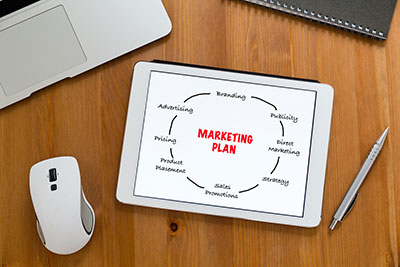
Making an Impression
How do you deliver a world-class experience? Not only is that part of your brand but it’s an important part of the experience and the story that your customers are going to tell. If you’re selling cars are you going to wax the whole car? If you’re doing design are you sending them a handwritten thank you card? Are you giving them a framed version of their logo? What are you doing special for your clients? Are you giving them an experience they’ve never gotten anywhere else? Is it the personal phone calls just to say hi? That randomness in a business can be an important part of your marketing strategy as well so take those things into consideration.
Building Lifetime Value
The second piece of the after phase is learning how to increase your lifetime value. Obviously if I’m delivering free value on YouTube and other platforms and then I have courses and other content mastermind groups and trainings things like that that’s how I can increase the lifetime value by having other offers. Let’s say your initial offer is something like a business card design and business card printing package deal. Well once you get their business cards delivered, what’s the next step for them?
Where are they trying to go from there? They may want to get a vehicle wrap. Maybe they need a website. Advertising could be their next step, and that could fall into your wheelhouse. If you handle each of those steps, your value continues to increase over time. Your solution starts with strategy then moves into design then it moves into growth. Those are the phases that I use in my business and that’s just an example that you guys could implement into yours.
Asking for Referrals
The last phase here–and this is one that you really need to implement if you haven’t already–is orchestrating referrals. The best way to get referrals is to have your current clients or customers provide them. Don’t be afraid to ask them. Whether through a text message through email or through a phone call, the worst that can happen is they say no. I find that text messages are a lot more effective; it’s quick and the open rates are ridiculously high. So asking them for a referral shouldn’t be a terribly difficult task. Simply say, “Hey, customer! I’m so glad you are happy with our work. Can you think of three people that I could help or that would use the same service I just gave you?”
If you’re delivering a world-class experience and if you’re bringing them a lot of value–like I’m doing here–they’re going to follow through. This is another example of the 80/20 rule, and you shouldn’t have to ask for every referral you get. So how do you orchestrate and stimulate referrals? Another way to do that is by getting testimonial videos from your clients and posting those up on your website. That will get you a lot of referrals because that’s the social media aspect and there’s something powerful and moving about hearing an endorsement directly from another customer. Reviews and reputation management help with this, too.
Final Thoughts on the 1-Page Marketing Plan
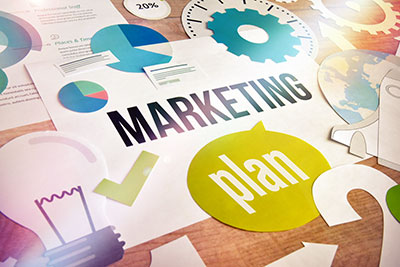
So this simple marketing plan is what I’m using for branding within my business but it’s been incorporated into a larger, more complex process that I’ve created. I call this my Marketing Consulting Blueprint and this is what I use to dig really deep with clients. I’m able to go so deep that I can really find out who they are as a person, what makes them tick, and what their social impact marketing goals are. Thank you for reading and learning with me. I’m Adrian Boysel and as always, keep looking up.
